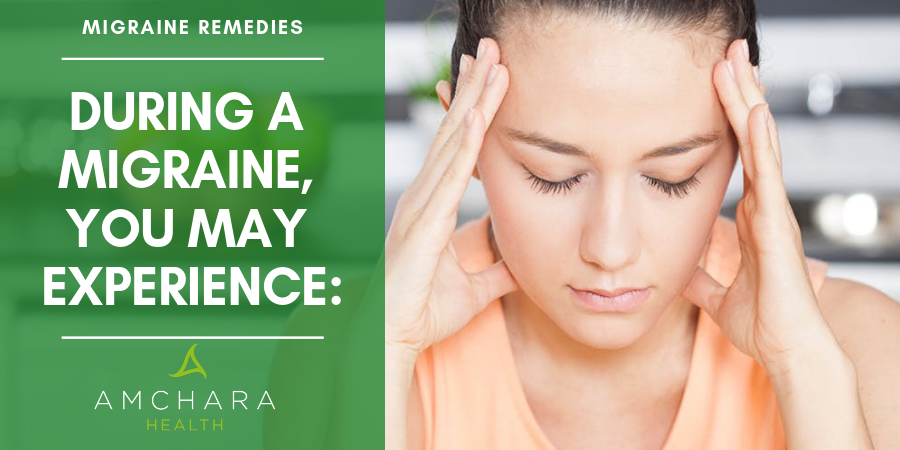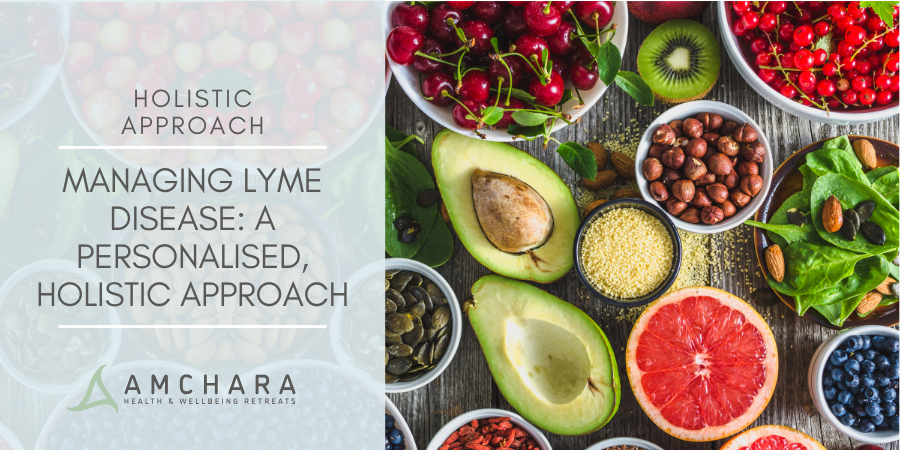A migraine is not just a headache.
If you’ve ever suffered from one, you’ll be familiar with the thumping head, and the nausea and visual disturbances which can occur alongside.
Our mission is to provide you with both insightful information and evidence-based content to provide you with actionable knowledge and tips to help you on your journey to optimal health.
This article look at what actually happens when you develop a migraine, the stages and symptoms of migraine, as well as conventional treatment and possible causes and triggers.
We will also explore natural alternatives to conventional pain-relief and preventive medication.
The Migraine Trust estimates migraine is the third most common disease worldwide, affecting 1 in 7 people, with around 190,000 attacks in the UK every day.
25 million days are lost from work or school each year in the UK because of migraines.
It’s a debilitating condition.
What Happens When You Develop a Migraine?
For many years it was believed dilation of the blood vessels in the head was to blame.
This is called the vascular theory of migraine.
Blood vessels appear to contract and then suddenly dilate, increasing blood flow to the head.
The blood vessels are attached to nerve fibres and the widening of the blood vessels results in pressure pain. In contrast, a regular headache is usually caused by constriction of the same blood vessels.
It’s now believed the dilation of the blood vessels is an effect rather than the cause, and other factors cause the change in blood vessel diameter.
It appears the most likely cause is neurological. Some scientists believe stress or muscular tension causes the initial narrowing of the arteries.
A nerve, called the trigeminal nerve, is responsible for sensation in the face, particularly pain perception around the eyes and head.
Messages travelling along this nerve cause blood vessels around the brain to expand.
The trigeminal nerve appears to become activated in migraine sufferers for unknown reasons, causing pain symptoms in any part of the face and head.
Inflammation of the tissue surrounding the brain can also contribute to the symptoms of migraine.
Nitric oxide is a chemical naturally produced by the body which regulates the muscles in our veins as well as the circulation of blood to the head.
It’s believed if we produce too much nitric oxide, this will cause our cranial blood vessels to dilate and may precipitate a migraine.
Stages of a Migraine
It’s thought there are two stages in the development of a migraine.
Firstly, the trigeminal nerve is activated, causing pain around the eyes and temples.
Secondly, the central nervous system is triggered and it’s then the pain becomes difficult to control.
Often, sufferers will find if they aren’t successful in nipping a migraine in the bud when it’s in its initial stages, painkillers and other methods are ineffective.
Then the only option is to wait for the migraine to pass away of its own accord.
Symptoms of a Migraine
These will vary from person to person, but can include the following:
- Pounding pain, often affecting only one side of the head – the pain is usually made worse by movement
- Nausea and vomiting
- Sensitivity to sound (photophobia), light (phonophobia) and odours
- Confusion, clumsiness and fuzzy thinking
- Fatigue
- Mood changes
- Increase in appetite, particularly cravings for chocolate, salt or chocolate
Migraines can come on without warning and typically last between 4 and 72 hours.
Around 25-30% of migraines are accompanied by an aura.
This is a visual disturbance which comes on up to an hour before the onset of a migraine.
Often an aura begins with a bright patch at one side of the right visual field, which then forms an arc, followed by dimness.
The aura may be accompanied by numbness, tingling, difficulty in speaking or other neurological problems.
The connection between the aura and the pain of a migraine remains a mystery, but some researchers believe it is related to a phenomenon known as cortical spreading depression.
This appears to be an episode of abnormal brain cell activity which is a little like a seizure.
An electrical surge travels through the brain cells followed by a wave of inactivity, spreading out in the brain like a ripple.
The phenomenon often starts in the part of the brain responsible for vision, which may explain the visual disturbances experienced in migraine aura.
When brain cells are affected by the electrical surge, chemicals are released which accumulate and can act as irritators for brain cells.
Migraine Treatment
In the past, it was thought migraines were best treated by an horrific process known as trepanning, which involved drilling a hole into a person’s skull to release evil spirits.
Anyone who has ever experienced the extreme pain of a migraine can imagine the lengths people may have been willing to go for a cure in the days before painkillers.
Nowadays, pain-relieving medication can be taken during an attack and preventive medicine can prescribed to reduce the likelihood of attacks, which often act on the blood vessels in the head. However, many of these medications come with side effects.
What Causes Migraine?
Migraine triggers are as individual as we are but working out what sparks off your migraines is the first step to controlling them.
Triggers can be cumulative so you might not suffer until you have a combination of these factors.
The following can precipitate a migraine in susceptible people:
- Food Triggers
Many different types of food (1) can trigger a migraine.
Scientists believe certain substances in food may affect vascular tone.
- Chocolate has been found to be positively correlated with migraine. (2)
- Cheese. A substance which naturally occurs in many cheeses, called tyramine, can trigger migraines. Tyramine is especially high in aged cheese, blue cheese, strong cheddars, swiss cheese and parmesan. Tyramine is also found in smoked fish and cured meats such as salami. Tyramine is naturally broken down in the body by a specific enzyme. If we don’t have enough of this enzyme, tyramine levels can remain high and spark off a migraine.
- Nitrates, found in bacon, deli meats, sausages and hot dogs, can trigger migraines. Added to this, cured meats will also contain tyramine for a double migraine-provoking effect. Researchers believe bacteria in our mouth can convert nitrates to nitrites, which then boosts levels of blood vessel dilating nitric oxide. In fact, one study (3) found migraine sufferers have more of these bacteria than people who aren’t affected. It’s likely they make more nitric oxide when they eat foods containing nitrates.
- Caffeine. The role of caffeine in migraine is contradictory. On the one hand small amounts of caffeine can relieve a migraine(4), but if caffeine is stopped abruptly, a rebound migraine may occur. If you’re looking to quit caffeine, reduce your intake slowly, by about 25% a week to avoid these. Remember many over-the-counter headache remedies contain caffeine.
- Alcohol, particularly red wine, (5) is a common migraine trigger.
- Monosodium glutamate (MSG). This food additive is used as a flavour enhancer, particularly in Chinese food. It’s a common culprit for triggering migraines.
- Pickled foods such as kimchi, sauerkraut, pickled vegetables and kombucha. These can also contain high levels of tyramine.
- Chemicals such as phenylalanine, a naturally occurring amino acid found in dairy products, soya, pumpkin seeds, meat, fish and eggs, and the artificial sweetener aspartame may be culprits. Some people find citrus fruits, bananas, nuts or even beans can trigger an attack.
Keep a food diary to help identify your personal triggers.
- Blood sugar
Skipping meals (6) is a recognised trigger for migraine.
If we go without food our blood glucose will fall. Blood sugar can also swing from high to low if we habitually eat sugary foods, or drink alcohol or coffee.
It’s believed a migraine can be triggered by a sympathetic nervous system mechanism which provides glucose to the brain by mobilising glycogen.
Adopting a blood sugar balancing diet can be of help to some sufferers.
- Stress and Sleep
Between 50-80% people (7) in one study said their migraines were triggered by stress.
Some people find their migraines occur in the aftermath of a stressful event.
Too much or too little sleep (8) can also trigger an attack.
- Hormone Imbalance
Migraine affects around three times as many women than men.
It’s especially common in women between 25 to 55 years, indicating that in some cases it may be hormone related.
Migraine sufferers often notice it starts at puberty, a time when hormones are in flux.
Many women experience migraine at the start of their period. This is called menstrual migraine.
The sudden drop in the female hormones oestrogen and progesterone just before a period appears to be the trigger.
Often migraine becomes worse in the first trimester of pregnancy and become less frequent as pregnancy progresses.
The contraceptive pill can worsen migraines in some people, as can HRT. Many women notice a reduction in the frequency of their migraines as they enter the menopause.
Taking measures to balance your hormones can help to avoid menstrual migraines.
- Outside Stimuli
Other triggers include bright light, certain smells from chemicals and cigarette smoke.
- Genetics
There appears to be a genetic aspect (9) to migraine.
People with one parent who suffers from migraine have around a 50% chance of suffering from migraine themselves.
- Weather Patterns
Many weather forecasts now include a ‘migraine forecast’, because risk of migraine is closely connected with the weather.
Research from Canada (10) found a drop in barometric pressure is closely connected with frequency and severity of attacks, as is humidity, and even wind direction and strength.
Natural Measures to Combat Migraine
If you do develop a migraine despite avoiding triggers, the following remedies have been found to be of benefit.
- Feverfew
This herb with yellowy-green leaves and flowers has traditionally be used to prevent migraine.
According to honeycolony.com it was once known as ‘medieval aspirin’.
One study saw a 24% reduction (11) in the average number and severity of attacks.
Although some other studies have been inconclusive, another study (12) enrolled volunteers who already used feverfew as a migraine prevention strategy and gave half of them a placebo without their knowledge.
Those receiving the placebo saw a significant increase in the frequency and severity of their headaches, nausea and vomiting.
- Lavender
Inhalation of essential oil of lavender (13) for 15 minutes was found to significantly reduce the severity of a migraine. Alternatively, try applying lavender oil to your temples.
- Co-Enzyme Q10
This is a nutrient often described as a ‘vitamin-like substance’. Co-Enzyme Q10 is known to be involved in the creation of Adenosine triphosphate (ATP), which is used as the major energy source of our cells.
In one study, (14) migraine sufferers were given 150mg Co-enzyme Q10 a day.
Over 60% of the participants experienced more than a 50% reduction in the number of days they suffered from a migraine. The duration of their pain also reduced.
- Peppermint
Peppermint essential oil naturally contains menthol. One study found applying menthol (15) to the forehead was effective for reducing migraine symptoms.
- Magnesium
It’s known low body levels of magnesium increase the susceptibility to a migraine.
Too little magnesium can cause the constriction of blood vessels, and magnesium supplementation may help muscles and nerves to relax.
Studies have shown people prone to migraine have especially low levels of magnesium (16) in their brain during an attack.
Magnesium supplementation (17) appears to be especially helpful in cases of menstrual migraine.
Foods rich in magnesium include nuts, seeds, beans and green leafy vegetables.
- Butterbur
The leaves and roots of this shrub contain the active ingredients petasin and isopetasin which may reduce inflammation.
It’s been found in studies to prevent the occurrence of migraine (18) when taken over a four-month period.
Butterbur can contain substances called pyrrolizidine alkaloids which can be detrimental to the liver, so make sure you only take herbal supplements which are free of these alkaloids.
Generally herbs like butterbur should only be used under the guidance of a qualified health practitioner.
- Ginger
Ginger is a well known remedy for nausea, and according to a studiy (19) decreased the severity and length of a migraine as effectively as a prescription drug in 100 patients.
- Combat Stress
Any measures aimed at combating stress may be of help in reducing migraines.
Yoga may be useful at releasing tension in trigger areas, as well as improving circulation. In one study (20), 12 weeks of yoga training plus medication was compared with medication alone.
The yoga group reported fewer headaches overall, as well as less impact from migraines on their lives.
- Biofeedback
This is a technique which teaches a person to control their autonomic response to stress.
One review of studies (21) found biofeedback techniques significantly reduce the frequency of migraine attacks.
The autonomic nervous system controls those bodily functions not under our conscious control.
By learning to control our stress response, we can learn to relax.
Biofeedback sensors relay information about what’s happening in the body, so can teach us to voluntarily control functions like heart rate, blood pressure and muscular tension.
Biofeedback may also increase the amount of oxygen reaching the brain.
- Acupressure
With its roots in Traditional Chinese Medicine, acupressure can be useful in relieving pain, migraine pain included.
One study (22) found a particular pressure point, known as PC6, reduced the nausea associated with a migraine.
This point is located three fingers-width up from the base of the wrist, on the inside of the arm.
Another popular acupressure point for the relief of a migraine is the L14 point, which is the space between the base of the left thumb and the first finger.
Apply firm pressure for 5 minutes.
- Exercise
Aerobic exercise improves blood vessel tone.
One study (23) prescribed one hour of aerobic exercise three times weekly.
The researchers found the intensity, frequency and duration of pain from migraine decreased significantly.
- Chiropractic
Chiropractic manipulation (24) has seen positive results in the control of migraine.
After two months, 20% of patients reported an impressive 90% reduction in the frequency of their migraines, as well as in their severity.
- Acupuncture
One review of studies involving acupuncture and migraine found 22 trials (25) carried out over a duration of 8 weeks resulted in a moderate reduction in the frequency of migraines.
Takeaway
Migraines can be debilitating, but by identifying and controlling your potential triggers and using some of the natural methods outlined above, you may be able to reduce your suffering.
READ THIS NEXT:







